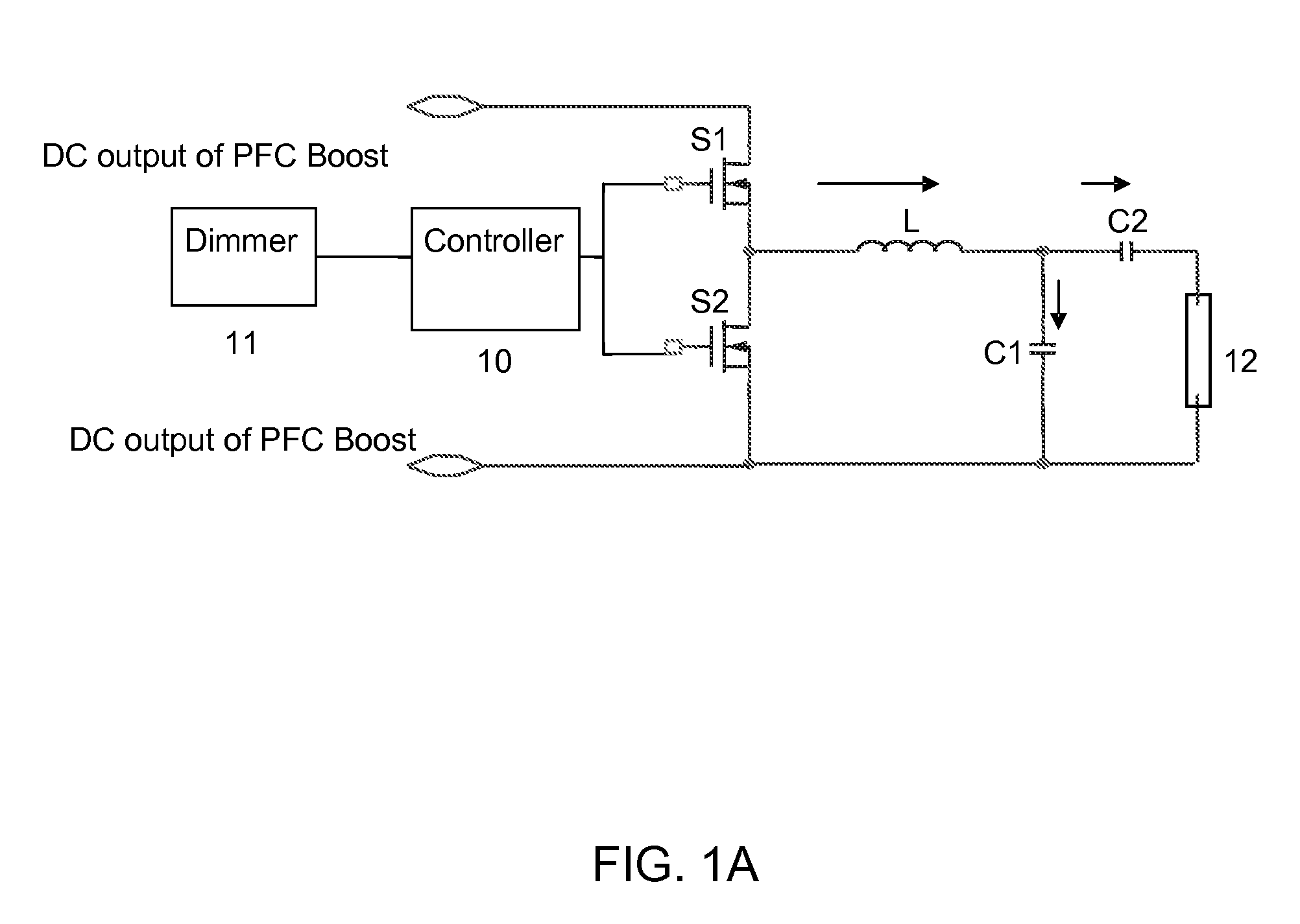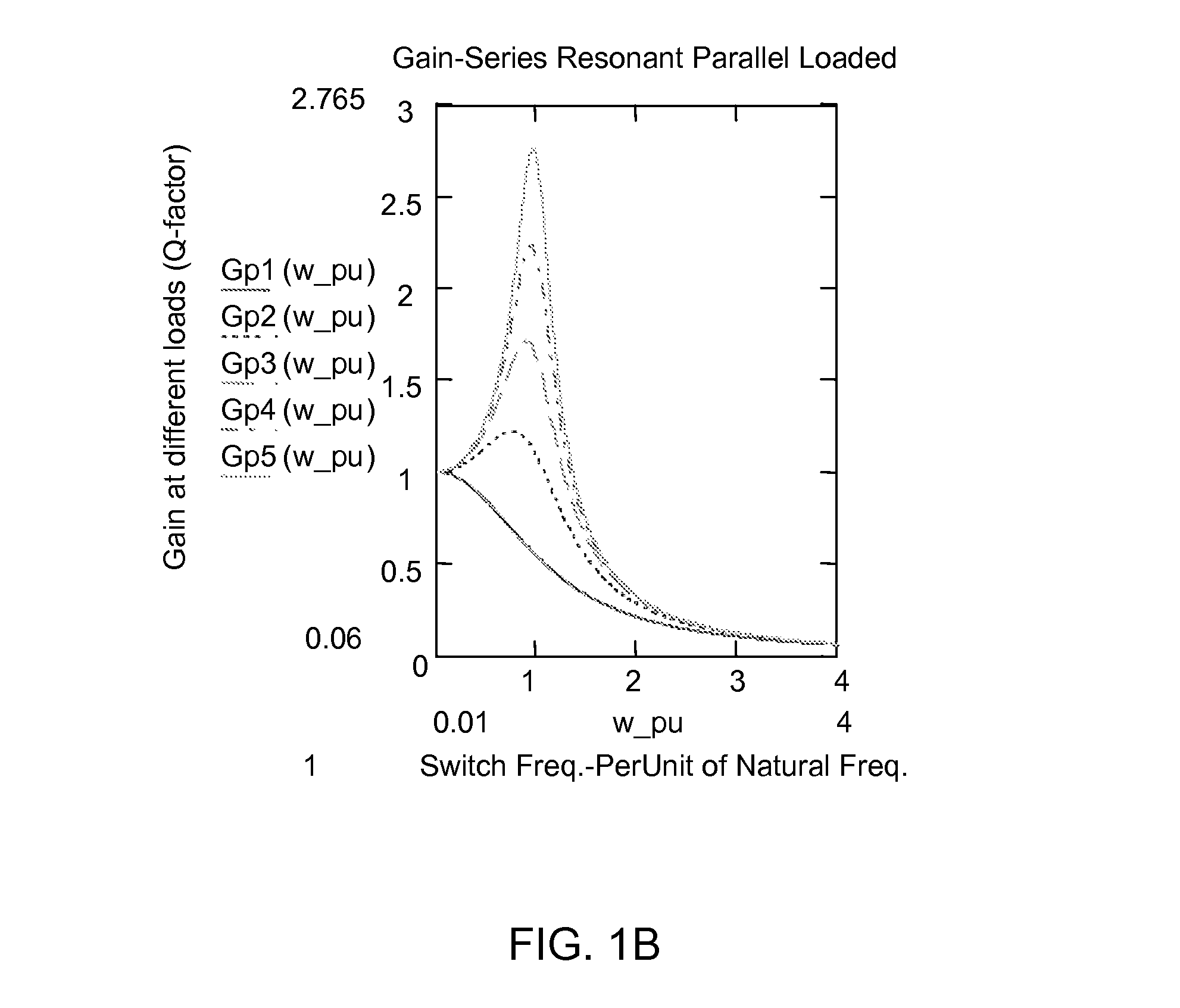Mixed mode control for dimmable fluorescent lamp
a fluorescent lamp and mixing mode technology, applied in the direction of lighting devices, instruments, light sources, etc., can solve the problems of ineffective adjustment of light output of fluorescent lamps b>12/b>, inability to meet the high gain required at high impedance for ignition and low load dimming, and flat curves, etc., to achieve the effect of reducing the pulse width of both switches and reducing the turn on time of one of the switching elements
- Summary
- Abstract
- Description
- Claims
- Application Information
AI Technical Summary
Benefits of technology
Problems solved by technology
Method used
Image
Examples
Embodiment Construction
[0035]Objects and advantages of the present invention will become apparent from the following detailed description.
[0036]The present invention employs the general structure of the conventional series resonant parallel loaded ballast with double switch choppers. FIG. 4 shows a mixed mode ballast for controlling a dimmable fluorescent lamp according to one embodiment of the present invention. To provide a smooth and continuous control range of 100% to 10% or lower light control, the present invention provides a mixed mode controller 100 to control the switching elements S1 and S2. The present invention also optimizes the values of L, C1 and C2 of the ballast. The switching elements could be transistors, specifically, FETs.
[0037]In one embodiment, when the load is adjusted from 100% to near threshold of losing the sensitivity to frequency control, the method of the present invention uses the conventional frequency control, and makes use of its symmetrical waveforms, i.e., D=0.5. FIG. 5...
PUM
 Login to View More
Login to View More Abstract
Description
Claims
Application Information
 Login to View More
Login to View More - R&D
- Intellectual Property
- Life Sciences
- Materials
- Tech Scout
- Unparalleled Data Quality
- Higher Quality Content
- 60% Fewer Hallucinations
Browse by: Latest US Patents, China's latest patents, Technical Efficacy Thesaurus, Application Domain, Technology Topic, Popular Technical Reports.
© 2025 PatSnap. All rights reserved.Legal|Privacy policy|Modern Slavery Act Transparency Statement|Sitemap|About US| Contact US: help@patsnap.com



